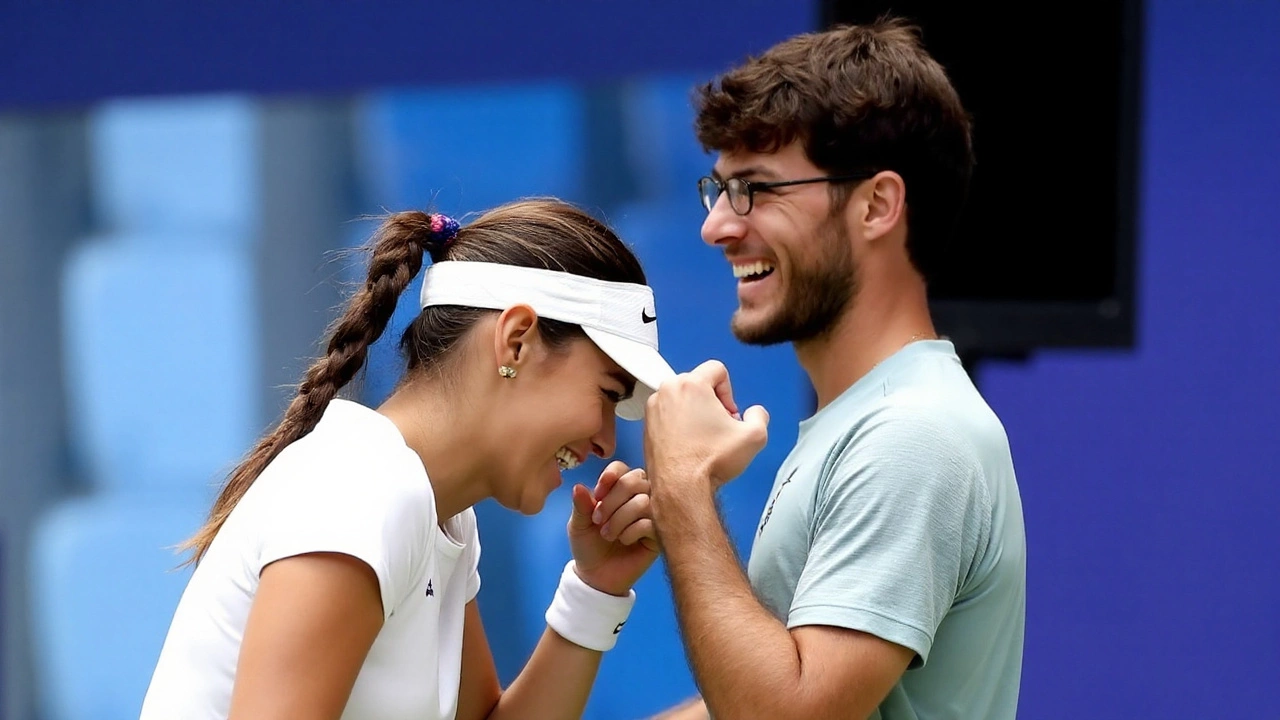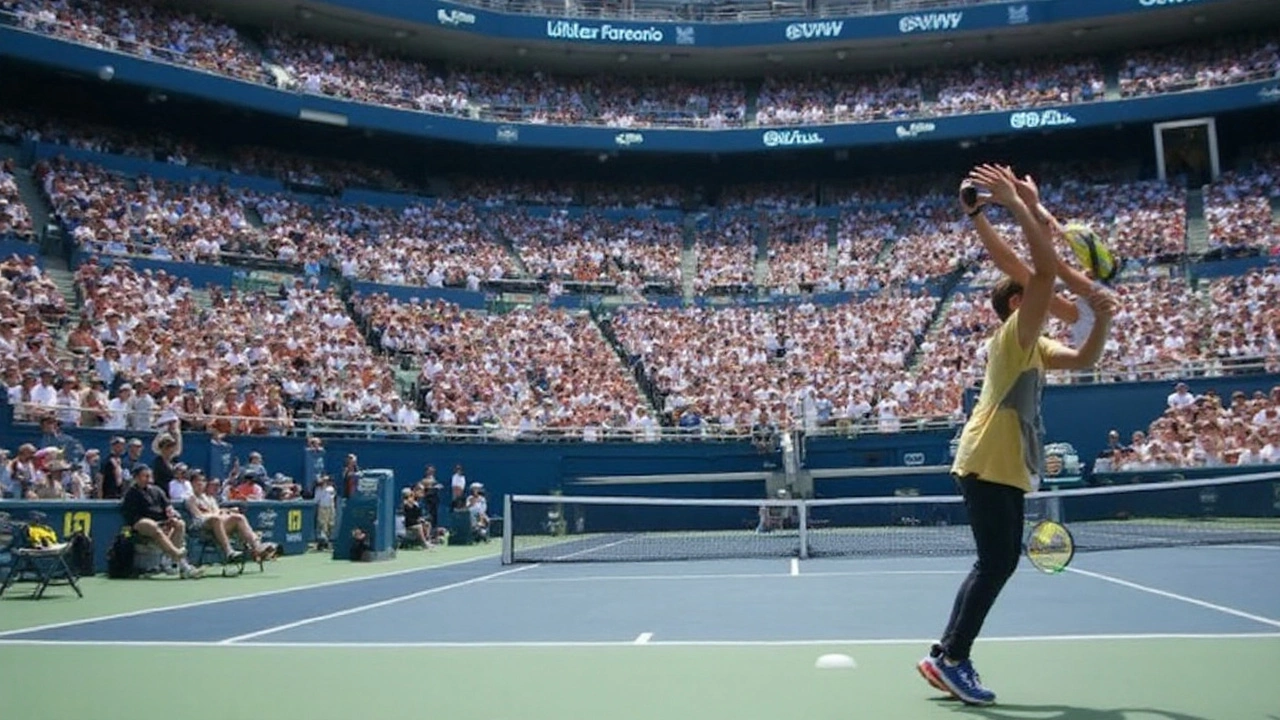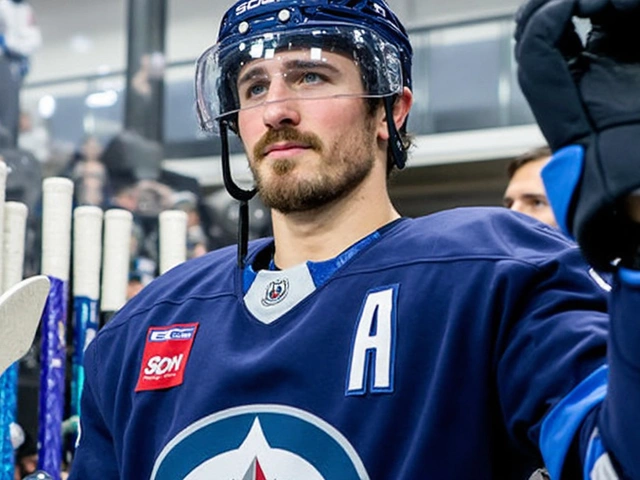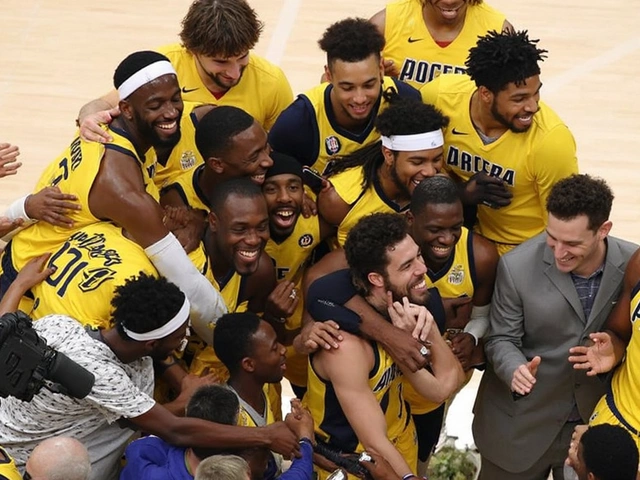A statement win under the Ashe lights
He didn’t face a single break point. He dropped just four games in 90 minutes. And he made the biggest tennis stadium in the world feel small. Carlos Alcaraz walked into Arthur Ashe Stadium on Wednesday night and took full control of his US Open second-round match, routing Italy’s Mattia Bellucci 6-1, 6-0, 6-3 with the kind of clean, ruthless tennis that sends a message to the rest of the draw.
The scoreline tells most of the story. The rest is written in the details: Alcaraz finished with a 32–11 edge in winners, dictated rallies from the first ball, and never once allowed Bellucci a window on his serve. Through two rounds in New York, the No. 2 seed hasn’t dropped a service game—27 straight holds at this tournament and 32 in a row going back to the Cincinnati semifinals. If you were hunting for signs of vulnerability after his surprise early exit here a year ago, you didn’t find any.
The tone was set early. Bellucci, making his debut on Ashe, blinked in the second game. Up 15–40, Alcaraz baited short balls, changed speeds, and pounced. The Italian hesitated on a sitter, waited a beat too long, and pushed it long. It wasn’t a huge moment on the scoreboard; it was massive in feel. From there, the match tightened like a vice. Alcaraz slipped into his favorite gear—front-foot pressure, fast hands, unhurried footwork—and never let the tension ease.
The second set was a bagel, the rare kind that doesn’t feel cruel so much as inevitable. Bellucci saw more height, more shape, and more surprise than he could handle. The world No. 65 likes to work the baseline with topspin and build patterns he can trust; Alcaraz ripped up those patterns. One point he was knifing a slice low and short. The next he was stepping around a backhand to fire an inside-out forehand at 95 mph. Toss in a disguised drop shot and a first-strike backhand up the line, and the Italian’s reads went fuzzy.
The third set offered resistance and some pride-saving holds from Bellucci. He started landing first serves, taking the ball earlier, and driving through the court. It didn’t change the outcome. Alcaraz kept applying clean pressure, mixing pace and depth, and closing quickly at net when the rally allowed. The final games felt like a professional shutdown: no theatrics, no wobble, just business.
Afterward, Alcaraz was blunt about what everyone saw: “Yeah, I played great, to be honest. Today wasn’t his day. I tried to make the most of his mistakes.” The honesty matched the performance. This was a no-doubt win, tidy and cold.

Form, context, and what comes next
This night in Queens landed very differently from last year. Twelve months ago, Alcaraz was sent packing in the second round by Botic Van de Zandschulp, a result that snapped the aura he’d carried into the event off a long streak of wins at the majors. That loss lingered. It sparked real questions—about shot selection under pressure, about managing the New York circus, about how to reset when a plan goes stale. Wednesday answered those questions with clarity. The decision-making was crisp, the tempo shifts were smart, and the margins were measured. He didn’t force highlight shots; he earned them.
The numbers keep stacking up. This win gives Alcaraz his 79th match victory at a Grand Slam in just his 19th major appearance—company that includes only John McEnroe, Bjorn Borg, and Rafael Nadal at similar career checkpoints in the Open Era. It says two things at once: he wins quickly at the biggest events, and he does it often.
There’s also the serve. The hold streak isn’t just trivia; it’s a tell. When Alcaraz locks in his first-serve patterns—wide to pull, body to jam, T to finish—he builds scoreboard pressure that bleeds into return games. Bellucci felt that. Most opponents do. A few tight misses on return, one fast service game for Alcaraz, and suddenly they’re serving down 0–30 again.
For Bellucci, this was a harsh but valuable first look at Arthur Ashe at night. The scale, the sound, the swirl of the roof—it all amplifies nerves. The 24-year-old has put in hard miles on the Challenger circuit, climbed into the top 70, and earned this stage. The lesson is brutal but clear: on a court like this, you don’t get three balls to settle. You get one. He’ll leave with film to study—particularly the way Alcaraz disguised the short ball and attacked neutral rallies—and with a better idea of the pace he needs to survive the second week at a major.
Strip away the theater, and the tactics were straightforward. Alcaraz attacked second serves, used the backhand down the line to crack open the ad court, and came forward behind heavy forehands when Bellucci’s replies floated. The drop shot wasn’t a trick; it was a tool, deployed to force Bellucci off the baseline and create space for the next blow. Where he once chased fireworks too early in points, he now builds them with two or three patient balls first.
He did it all with a new look, too, thanks to a haircut mishap at home—a buzz cut courtesy of his brother. It’s the kind of detail that usually becomes a meme. Here, it just fit the vibe: clean lines, no drama, straight to the point.
What does this mean for the tournament? It cements Alcaraz as one of the faces of week two. The draw is still full of danger—big servers who can take the racquet out of your hand for an hour, counterpunchers who make you prove your patience, veterans who lean on savvy and rhythm. But the floor of his level is what jumps out. Nights like this remind you how high that floor sits. Even without his flashiest shot-making, he won 18 of 20 service games across the first two sets, pointed the match where he wanted, and kept the crowd in his pocket without needing a circus act.
And that crowd matters. Ashe at night has a rhythm: a buzz as fans file in from the grounds, a quick hush on big points, then a roar that swells on cue. It can rattle or it can lift. Alcaraz plays it like an instrument—calm body language between points, full throttle when the scoreboard invites it. Bellucci got the worst version of that dynamic: a favorite in flow with a crowd eager to ride the wave.
What should we look for next? More of the same serve discipline, for one. If the first-serve percentage stays solid and the patterns keep landing, he’ll keep stacking short holds and turning every return game into an exam for the opponent. Expect more opportunistic net play. Expect the backhand down the line to show up whenever a rally gets stuck crosscourt. And expect him to test second serves early in sets—it’s how he grabs control without burning energy.
There was also a subtle piece of game management here. After the runaway second set, the third could have dragged if Alcaraz started chasing winners or got cute with angles. He didn’t. He managed the tempo, pocketed the early advantage, and declined every invitation to turn one tight game into a scrap. That’s the difference between a routine straight-sets win and a three-hour grind that steals life from the next round.
On the other side, Bellucci leaves with a to-do list. He’ll want a cleaner first-strike pattern on short balls—two steps forward, compact swing, finish early. He’ll want a bolder return position on second serves, at least in patches, to keep a player like Alcaraz honest. And he’ll want to hide his forehand corner better; too many rallies started neutral and ended with Alcaraz leaning into that wing.
Big picture, this was a bounce-back night for a player who hates loose exits. It resets the narrative in New York after last year’s stumble and puts him right back in the conversation for the title he first won here in 2022. The field knows it. So does the stadium. There’s still a long way to go—five matches, five different problems to solve. But if you’re hunting for signs—rhythm on serve, clarity on the big points, efficiency in the trenches—you got them.
Key numbers tell the story:
- Score: 6-1, 6-0, 6-3
- Time on court: just over 90 minutes
- Winners: 32–11 in Alcaraz’s favor
- Break points faced by Alcaraz: 0
- Service holds at this US Open: 27 straight
- Consecutive service holds overall: 32 (including Cincinnati)
- Major match wins: 79 in 19 Grand Slam appearances
- Seeding and rankings: Alcaraz (No. 2), Bellucci (No. 65)
- Stage: Arthur Ashe Stadium night session; Bellucci’s first match on Ashe
The calendar will tighten now. The third round brings a different type of opponent and, likely, a different pace—maybe a bigger serve, maybe longer rallies, maybe both. What matters is that Alcaraz arrives with a clean body, a tidy stat sheet, and a live feel for this court. The hair may be shorter, but the runway looks long.
One more thing to file away: the gap between his highlight reel and his winning tennis keeps shrinking. That’s bad news for everyone else. He can thrill the crowd when he needs to, but he no longer needs to chase it. On a New York night that can swallow the unprepared, he made Arthur Ashe feel like a practice court and kept the scoreboard humming. For a contender at the US Open, that’s the surest sign he’s right where he wants to be.





